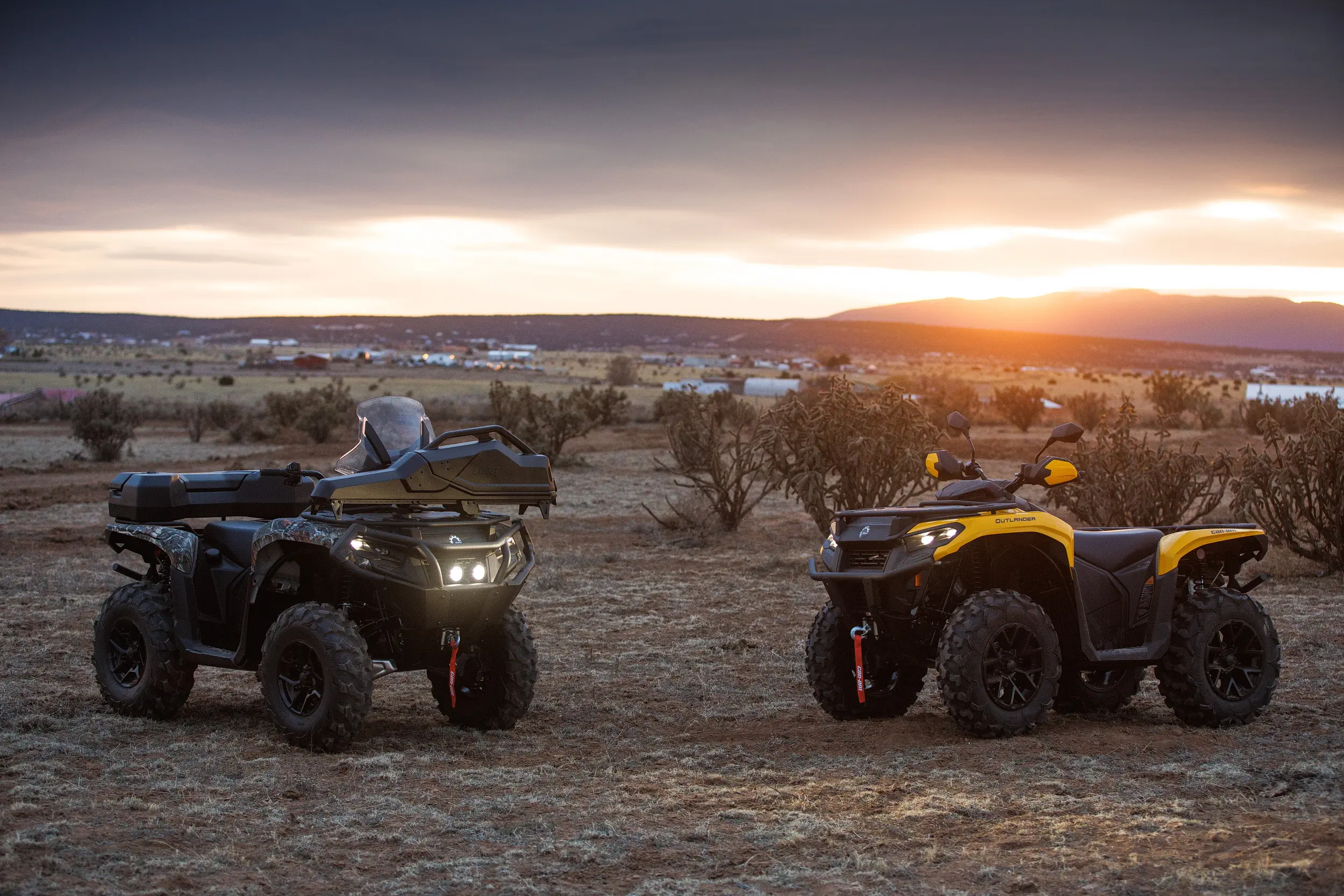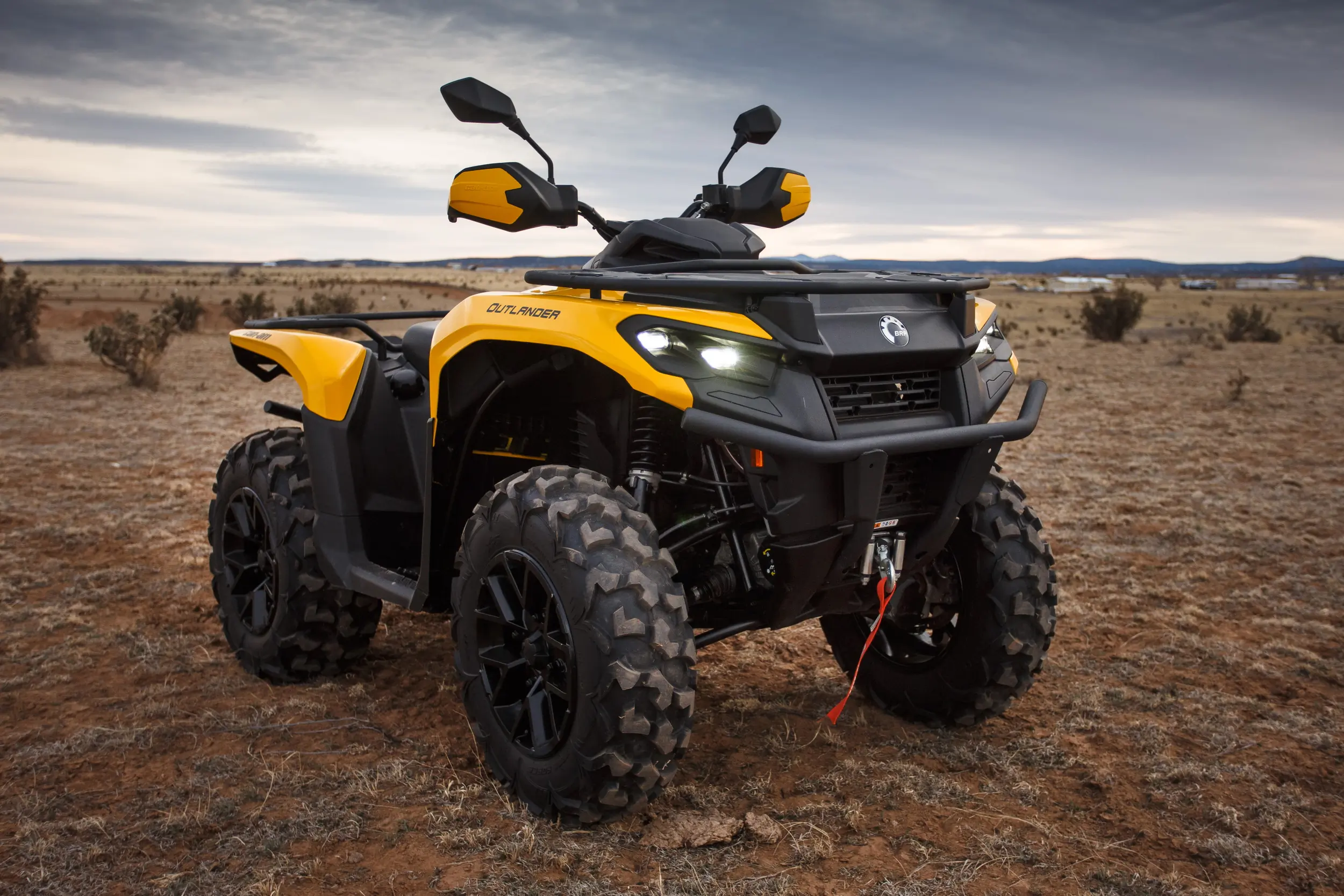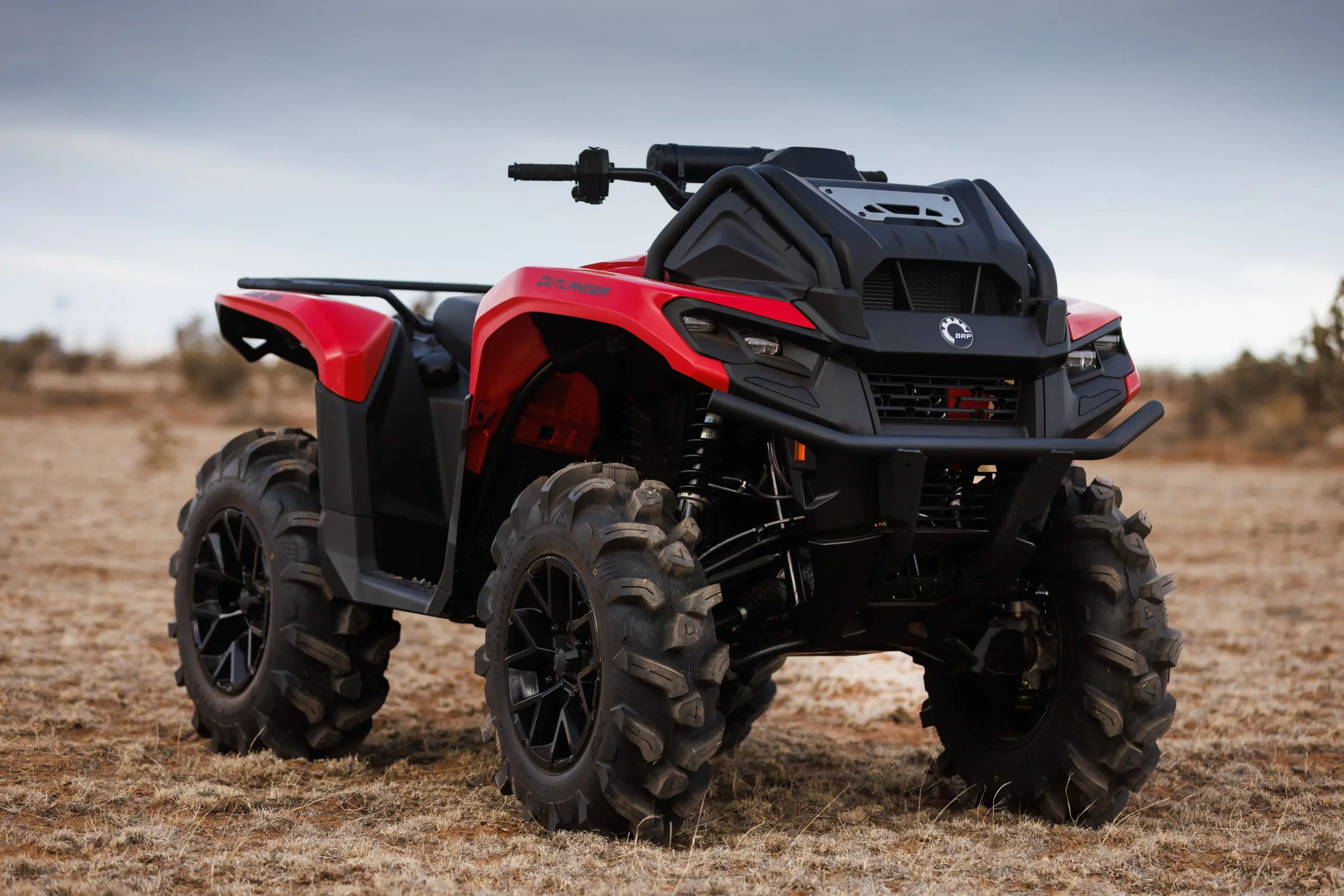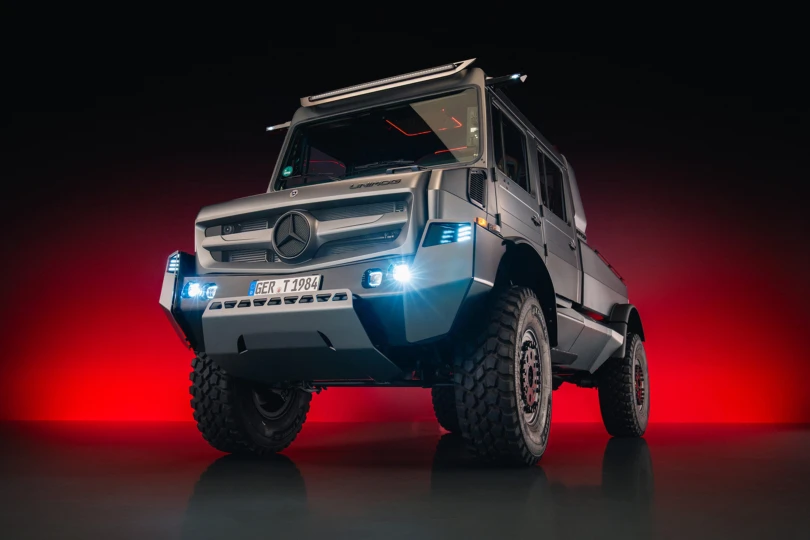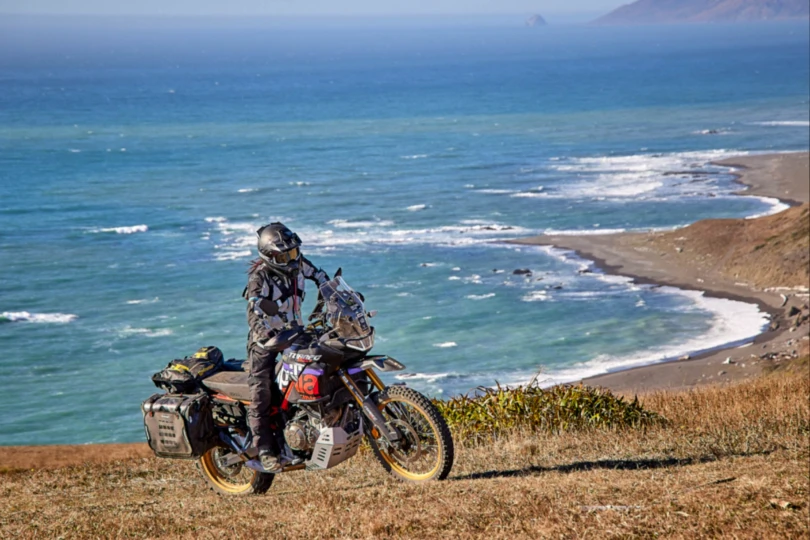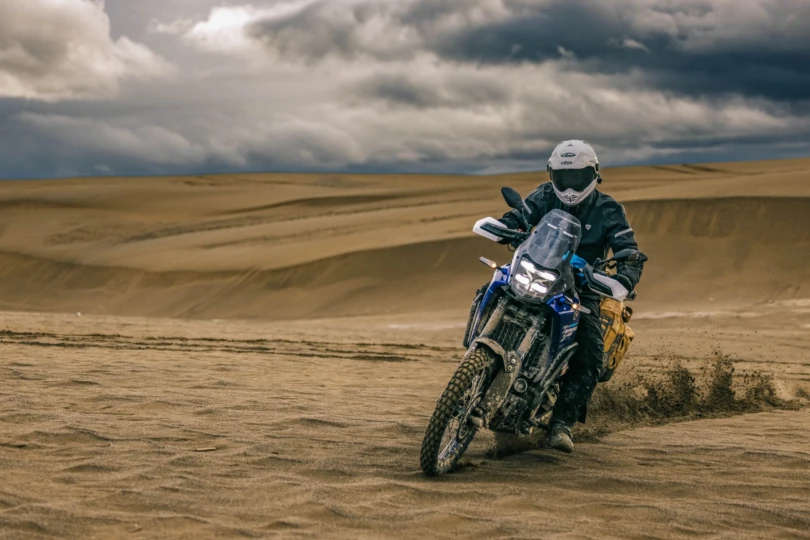Undecided if you want an ATV for fun activities or require the utility of a working machine? The redesigned Can-Am Outlander and Outlander PRO are built for both work and play. While both are capable of getting chores done on the property, hauling gear to your favorite outdoor playground, or cruising the backcountry trails, the choice comes down to how it’ll get used more often.
The new Outlander models emphasize the trail riding experience and recreational aspects. The intent of the Outlander PRO models focuses on utility and getting the job done. Hence the drivetrain, suspension, and everything about it is optimized for towing, carrying heavy loads, and long work days.
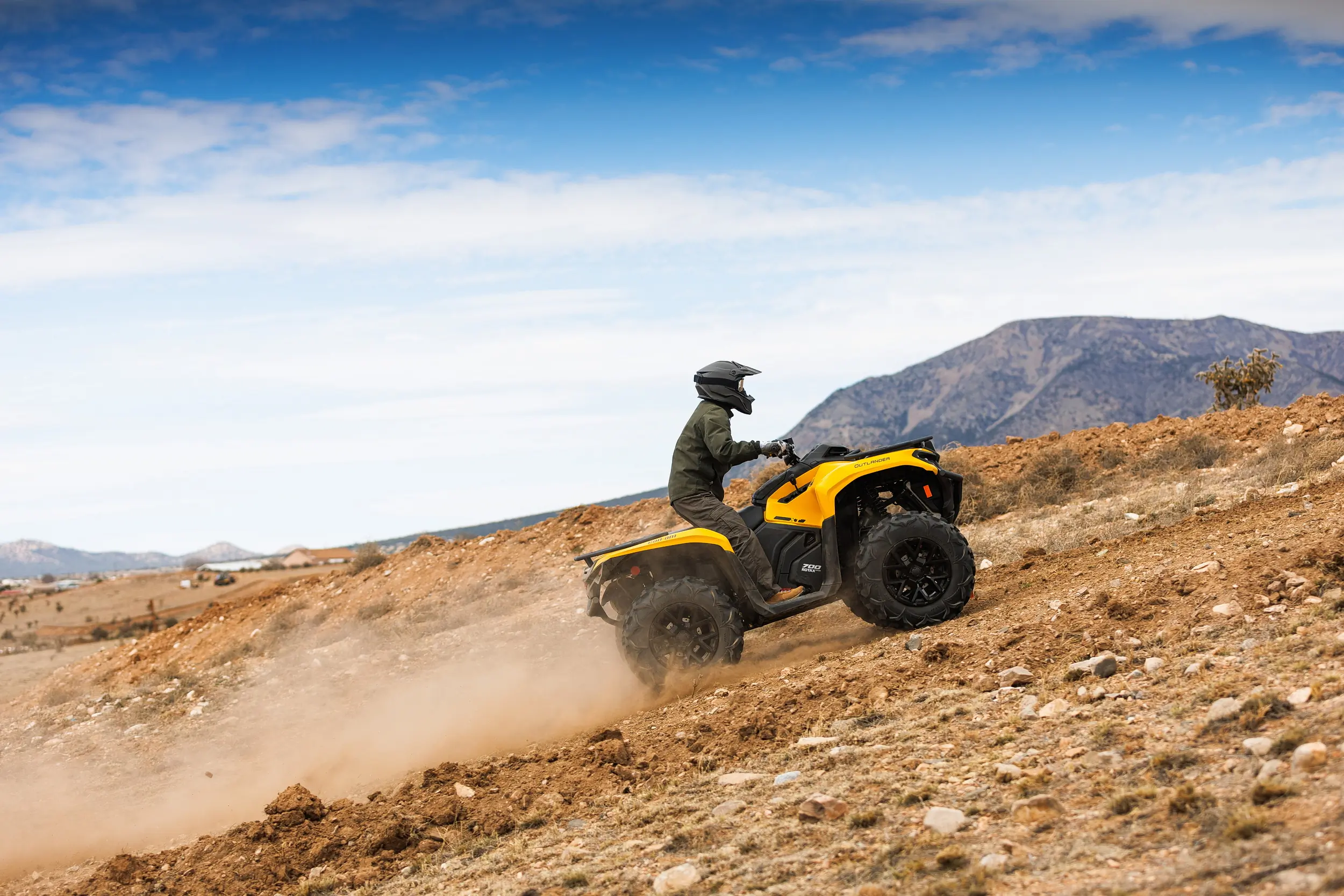
In short: All of the redesigned 2023 Can-Am Outlander models are set up for all-day ride comfort, low maintenance, and plenty of power to serve as a work mule and sport adventurer. As a testimony to the ATV’s versatility and adaptability, it has the gumption to finish the tasks around the homestead and double as a recreation quad after finishing the chores.
- Engine: 650cc, single-cylinder, four-valve DOHC Rotax engine
- Power: 50 horsepower
- Torque: 41 lb.-ft.
- Transmission: CVT
- Drivetrain: Selectable 2WD/4WD w/Visco-Lok QE
- Dry weight: 858 lbs.
- Wheelbase: 53"
- Tow capacity: 1,650 lbs.
- Rack capacity: Front 100 lbs. / Rear 200 lbs.
Pros
- 15 Outlander packages designed for work, play, or both
- Now more capable and reliable than ever before
- More than 75 accessories add potential for work or play customization
- All-day riding comfort
- Easy access to components make servicing easy (at home or on the trail)
- Modest pricing matches or beats class competitors
Cons
- CVT drone
2023 Can-Am Outlander & Outlander PRO
The opportunity to learn all about the new 2023 Outlander came about after accepting an invitation from Can-Am. At the BMF Ranch just outside of Albuquerque, N.M., I did a deep dive into the midsize ATV’s design, engineering, and core audience. After that, I had several hours in the saddle on the Outlander XT 700 and Outlander Pro HD5 to grasp its performance aptitude and capabilities.
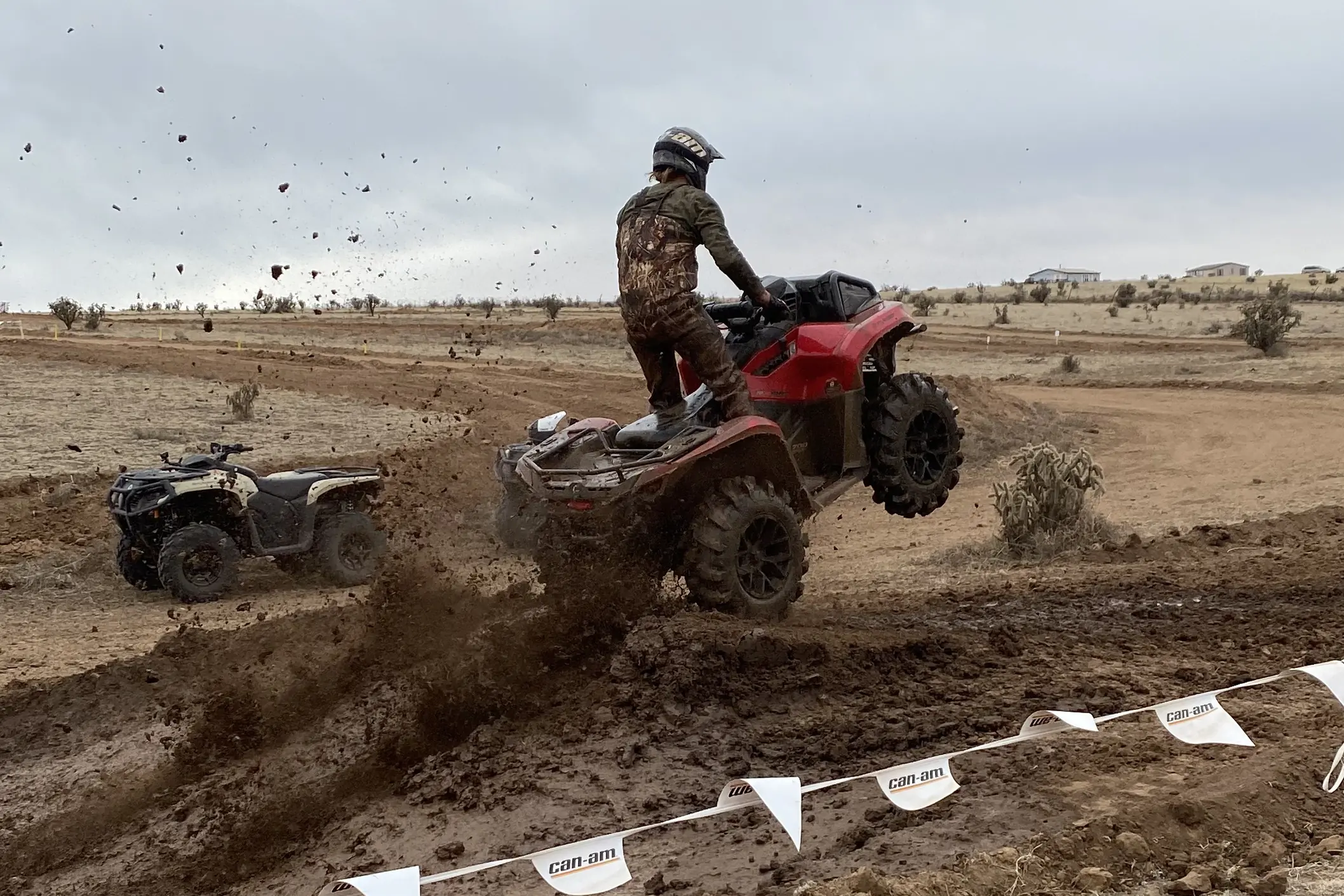
What’s New for 2023
The 2023 Can-Am Outlander started from a clean sheet design and is all new except for the proven Rotax V-twin engine and pDrive clutch system. The Rotax 700 and HD7 models deliver up to 50 horsepower, and the 500 and HD5 are good for up to 40 ponies. Now that the Outlander 450 and 570 have been retired, the recreation-focused Outlander 500/700 models and work-oriented Outlander PRO HD5/HD7 models go into service.
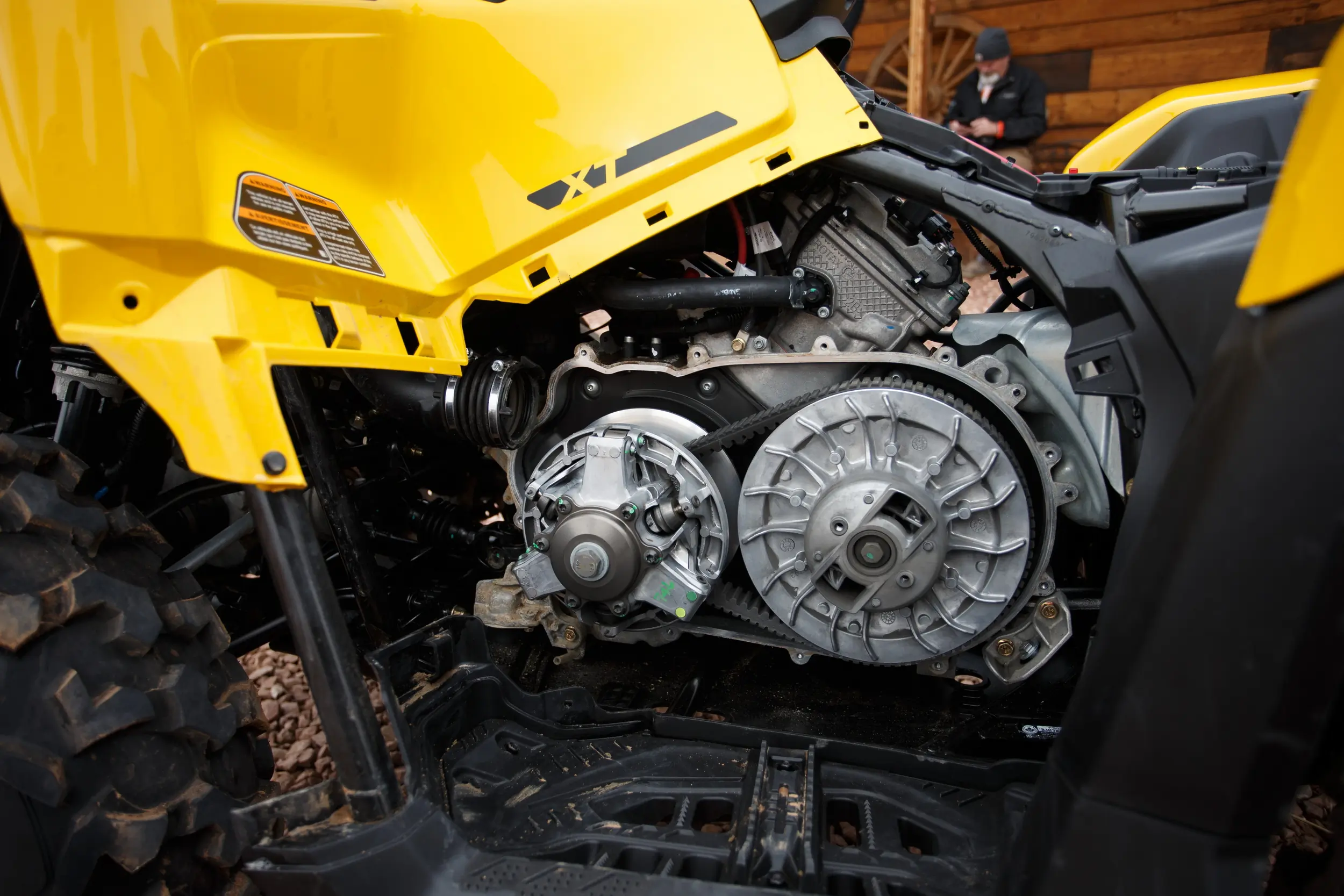



Essentially, all of the new Outlander models use the same 650cc four-valve DOHC Rotax engine and CVT transmission. The camshaft and ECU determine the power output. In other words, a flash upgrade of the ECU will not boost power.
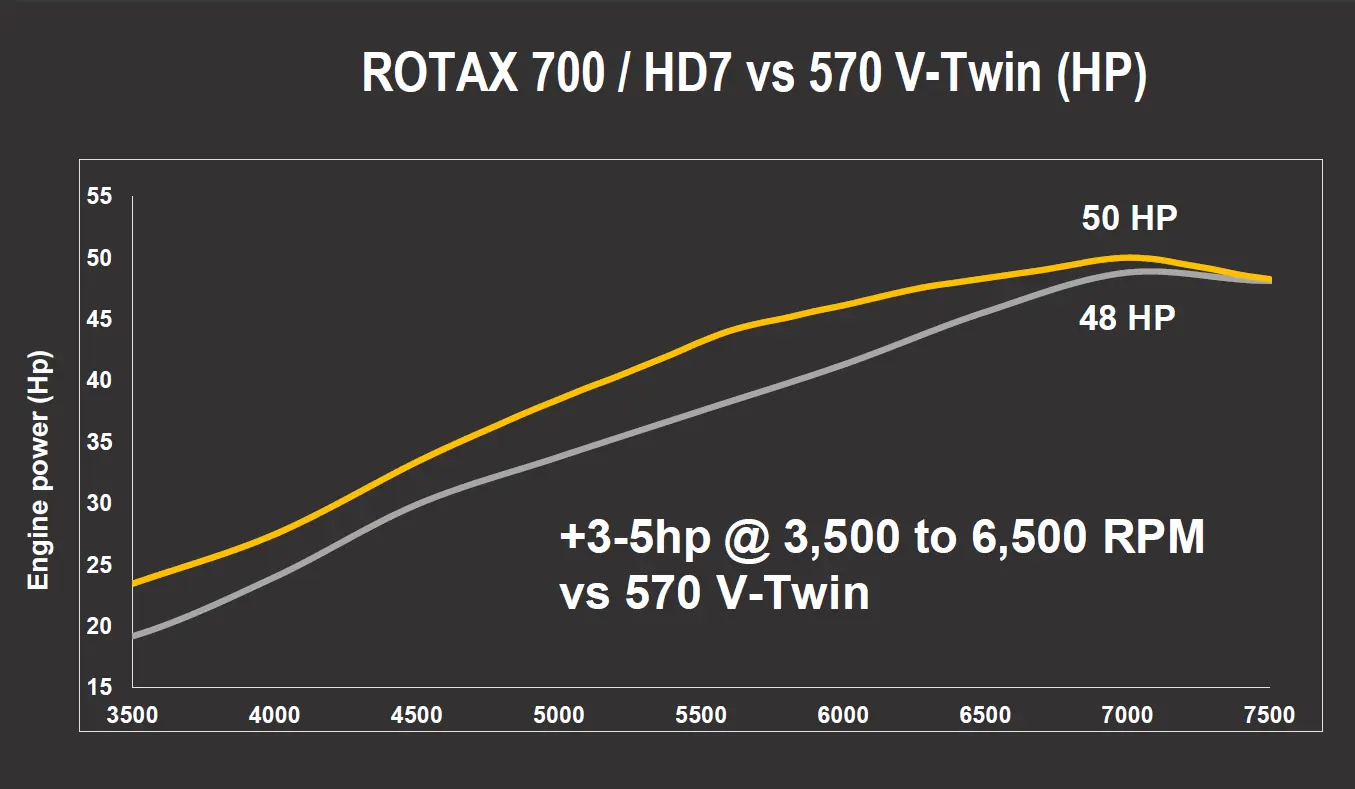



Some may miss the V-twin from the 570, but the Rotax delivers more usable torque where it counts. Analysis reveals the Rotax 700/HD7 produces 3 to 5 more horsepower in the 3,500-6,500 rpm range compared to the 570 V-twin. More importantly, torque rises 4 to 7 pound-feet in a lower rev range.
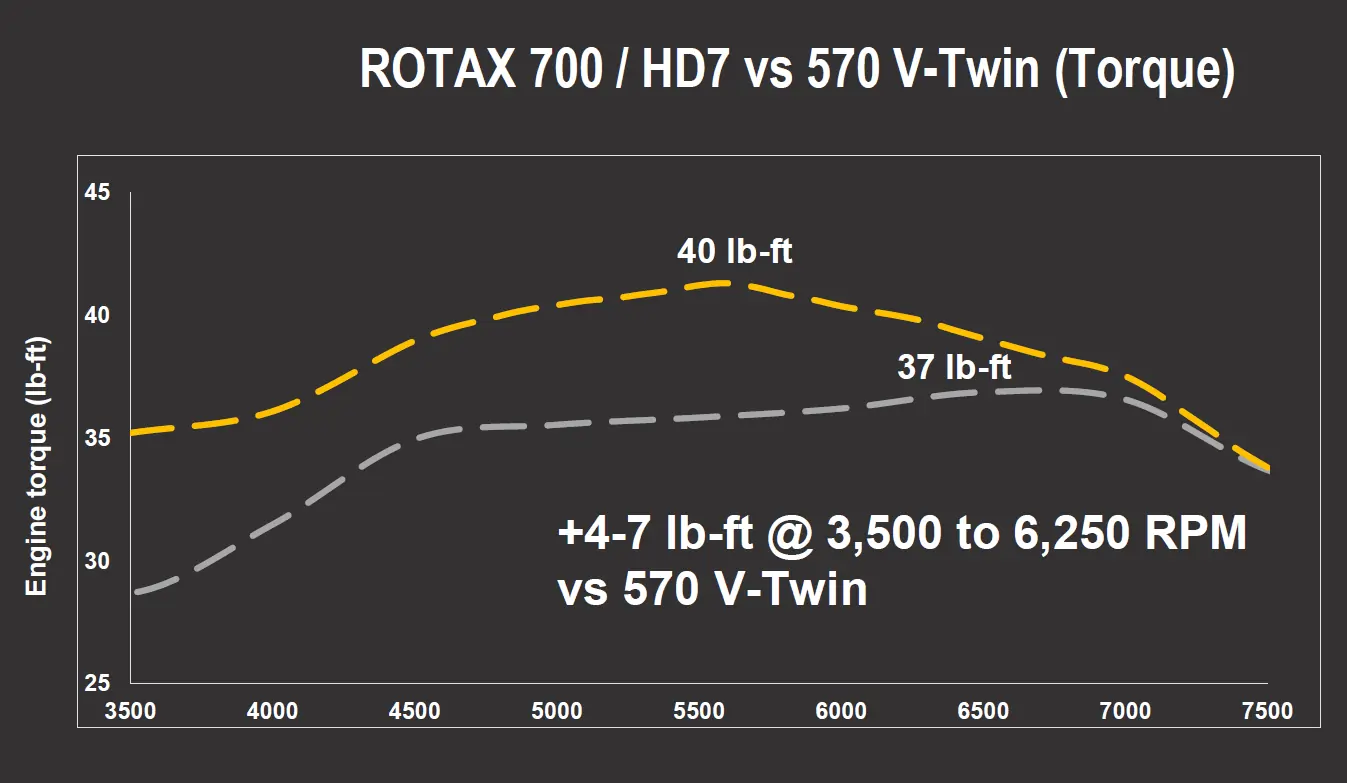



- Engine: 650cc, single-cylinder, liquid-cooled Rotax engine
- Power: 40 horsepower
- Torque: 37 lb.-ft.
- Transmission: CVT
- Drivetrain: Selectable 2WD/4WD w/Visco-Lok QE
- Dry weight: 800 lbs.
- Tow capacity: 1,830 lbs.
- Rack capacity: Front 120 lbs. / Rear 240 lbs.
The Outlander PRO has the DNA of a worker. The equipment packages and available accessories are well thought-out and efficient. The standard LED lights help with finishing the job when the work goes past sundown and will help you come home safely. The integrated mounting points on the bumpers make it a snap to add LED light bars to brighten the area even more.
Specific packages include a 3,500-pound winch and glovebox with a cellphone holder and USB charger. When winter conditions get harsh, the Outlander PRO has more integrated accessory mounting points, making installing snow tracks and plows easy-peasy.
The luggage racks are made of metal, so they’ll take on a load of up to 120 pounds on the front and 240 pounds on the rear. The 13-inch ground clearance — 2.5 inches more than the old 450/570 — is high enough for you not to worry. For 2023, Can-Am offers 75 accessories and LINQ options to outfit the new Outlander ATVs.
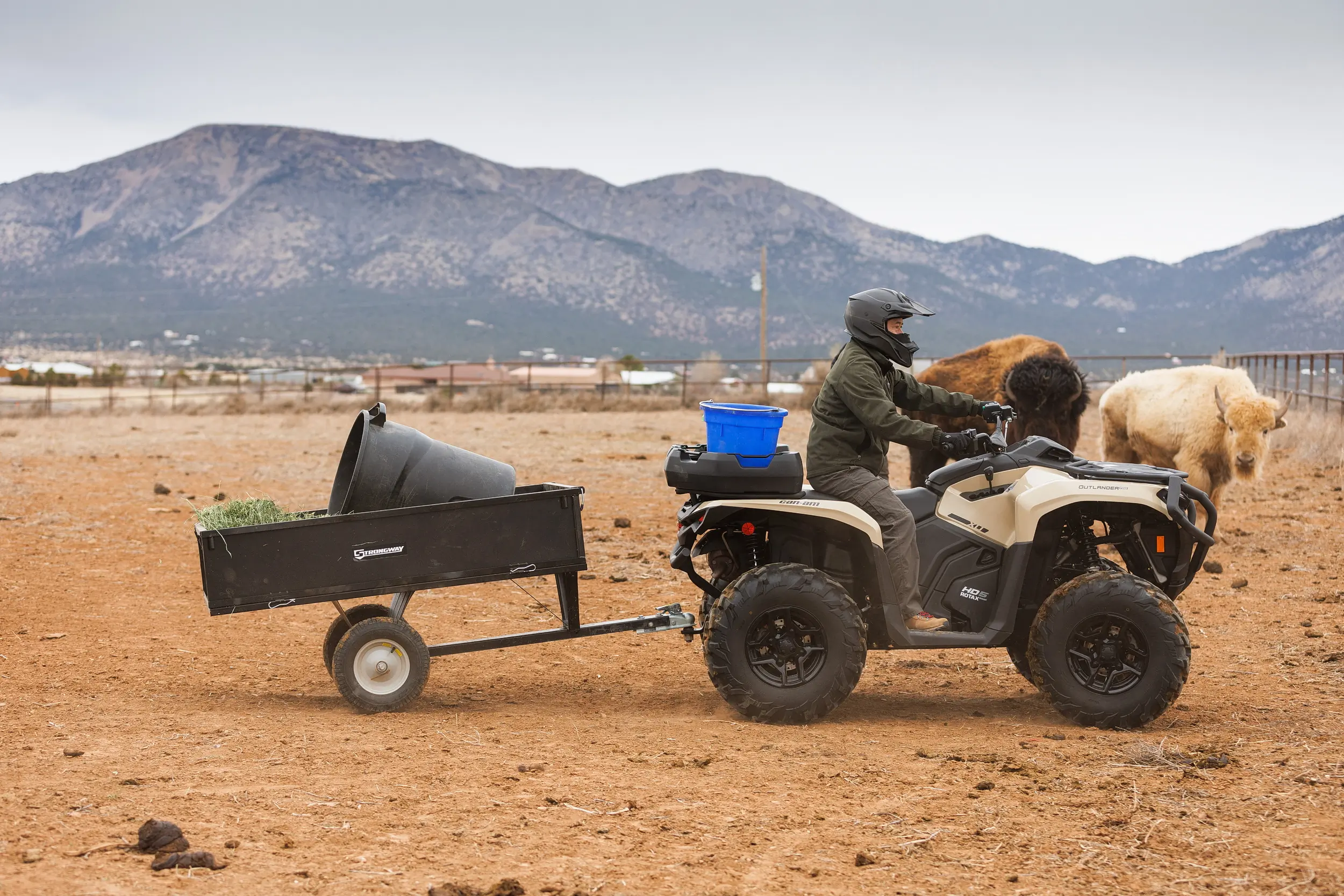



Driving Impressions: Can-Am Outlander XT 700
My introduction to the new Outlander and Outlander PRO took place on a dirt track in New Mexico. Maybe not a hardcore test of its capabilities, but I got a serious taste of its driving dynamics, the suspension action over various terrain, and how it handles in the turns.
This Is Not Your Father’s Outlander Anymore
The initial off-the-line launch doesn’t take your breath away, but that’s good. My time riding the redesigned quads was in the high desert of New Mexico, where the elevation was well over 6,000 feet above sea level. Despite the high altitude affecting peak output, there is lots of power once you get into the midrange, and quite satisfying when laying heavy on the throttle.




Can-Am’s pDrive clutch system and CVT perform admirably, which the X3 also shares, but have pluses and minuses. What I noticed is that the clutch takeup is steady, throttle modulation responds smoothly, and shifting in and out of gears is on the money.
I like the fact that a CVT does a great job keeping it in the powerband’s sweet spot. Additionally, the engineering team maximized airflow to ensure the belt’s longevity and made a point of directing heat away from the rider.
A minor annoyance is a droning noise from the CVT. However, 300 hours or 186 miles (300 km) between maintenance services is not a joke and well worth the tradeoff of listening to the CVT.
The tri-mode dynamic power steering (DPS) is pretty sick. It only takes a little effort to rotate the big beast around tight corners and fast banked turns. Plus, it is programmable to match your driving style if you prefer to muscle your way around the bends.
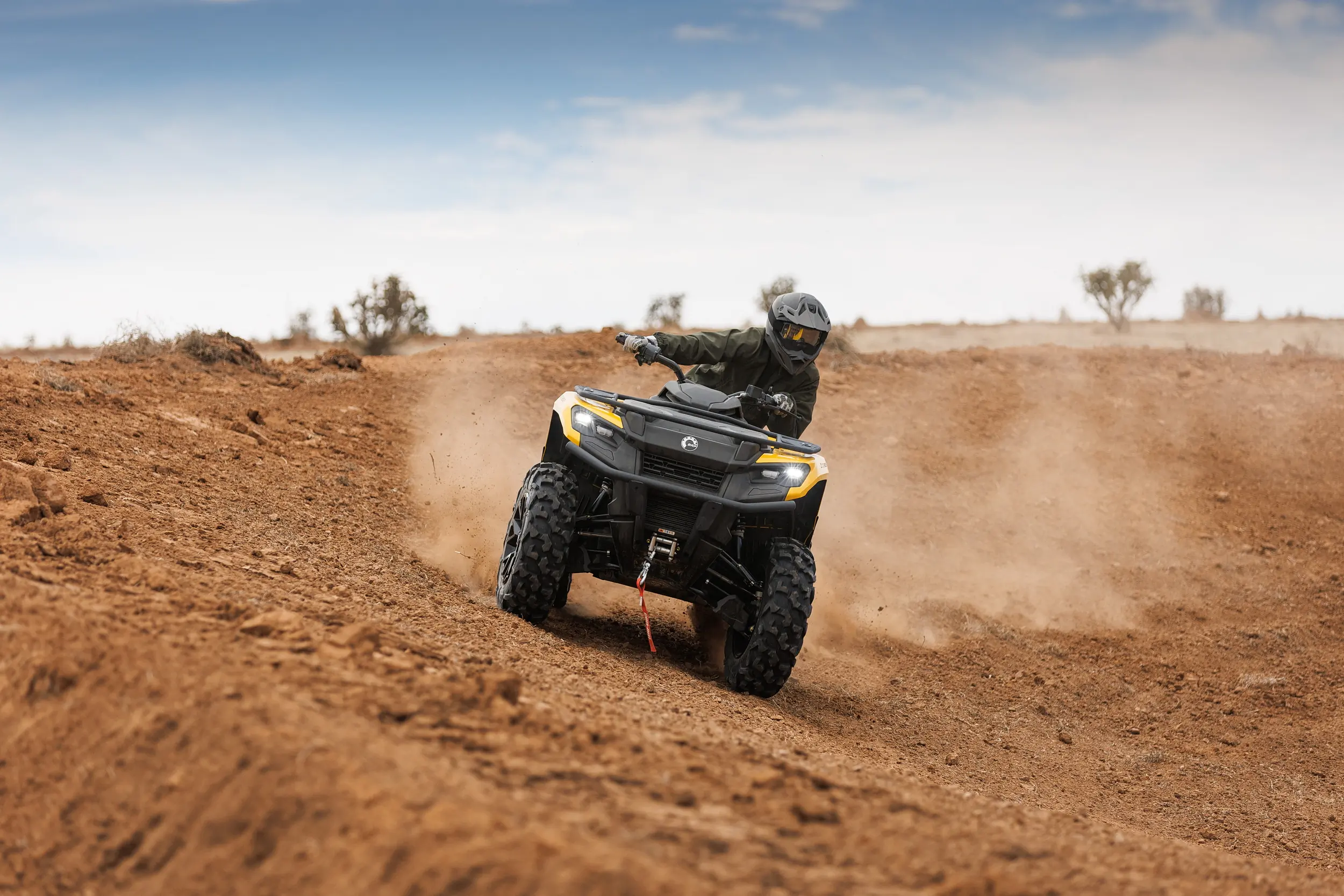



Outlander Driving Dynamics
Getting comfortable with Can-Am’s redesigned Outlander took little time. I found it super easy to ride and quickly became familiar with how it accelerates, maneuvers around the turns, and responds to throttle input. For an ATV that weighs over 800 pounds, I was pleasantly surprised at how well it operates and gets out of its own way with little drama.
At fast or slow speeds, riding the Outlander XT is nearly effortless. To ride it aggressively, I had to get into the right mindset. Leaning into the turns, cranking over the handlebars, and shifting my weight and position for whatever the trail was throwing at me: G-outs, off-camber turns, launching up a hill, catching some air, and calls for heavy braking. The quad has a burly demeanor but behaves like a well-trained steed.
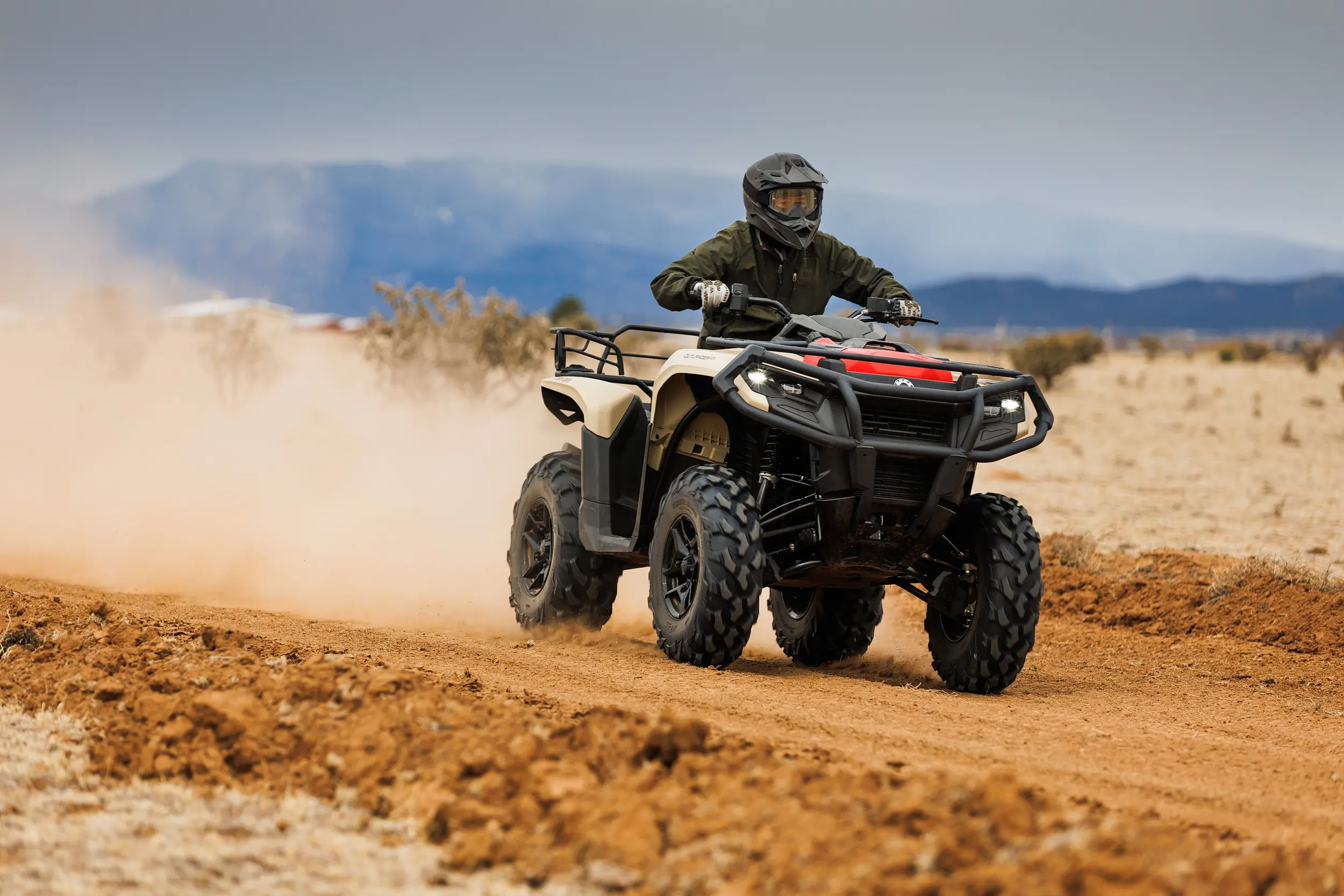



Riding the Can-Am Outlander PRO HD5
Getting onboard the Outlander PRO HD5 is a slightly different animal. The quad is tuned more for domestic duties than recreational romping. As such, ride comfort is on the softer side, and the strengthened frame is better suited for carrying heavy loads and towing up to 1,830 pounds.
Another difference is that the Outlander PRO has an electronic throttle-by-wire system because the machine comes equipped with Can-Am’s three-level intelligent engine-braking system. In contrast, the XT uses a traditional throttle cable connected to a thumb lever.
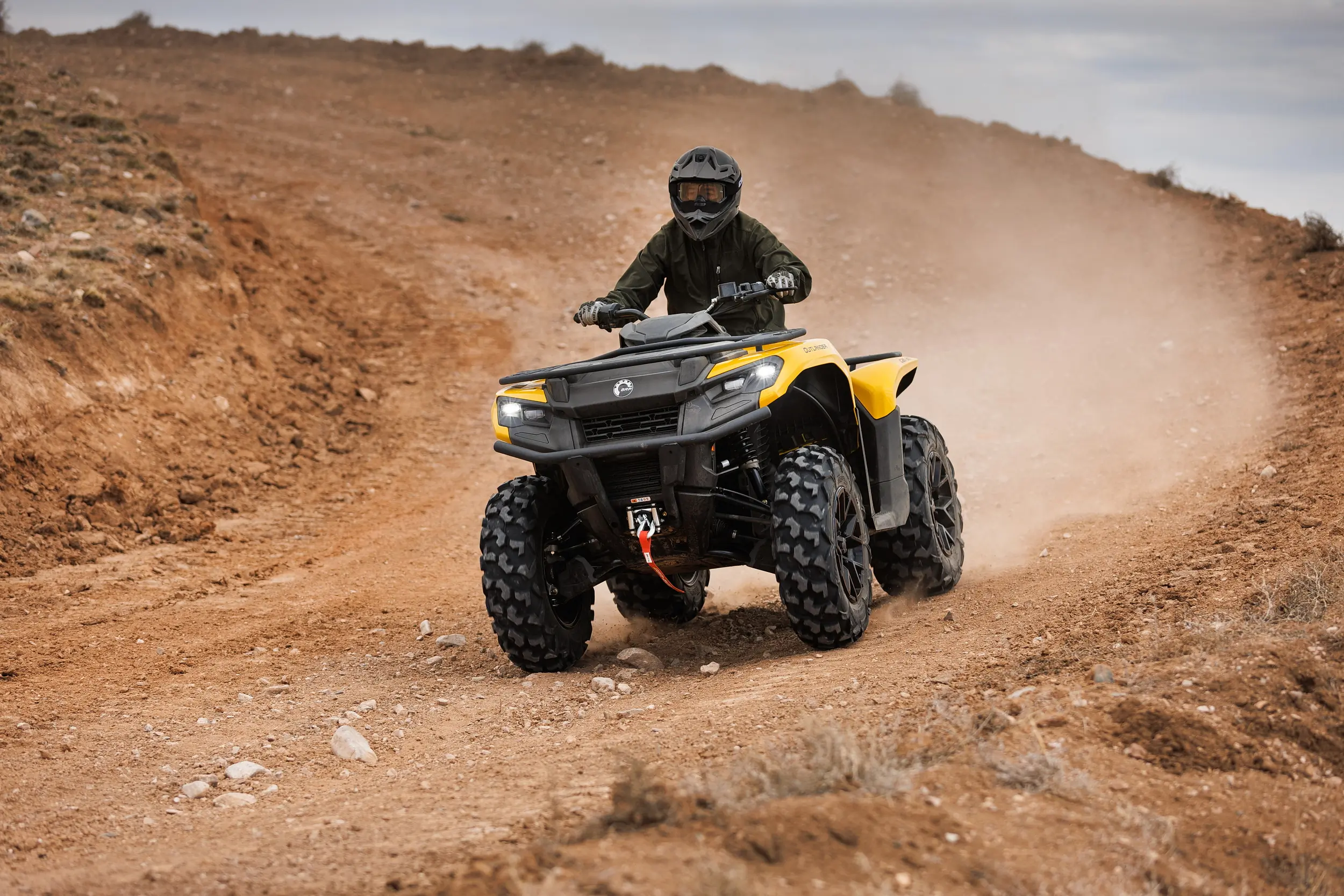



2023 Can-Am Outlander Review: Conclusions
For exploring vast trail systems or the call for a trustworthy steed when hunting or fishing in the great outdoors, the capabilities of Outlander XT shine. The Outlander PRO is a diehard worker with numerous accessorizing options that don’t need an equity loan on your house.
Altogether, my time with the new midsize Can-Am ATVs was fun and enlightening. It’s not a rompin’ side-by-side, but it’s more than enough to spend your days riding the trails and backcountry with a smile. Given its emphasis on comfort, durability, versatility, and ease of use, I can easily see the Outlander and Outlander PRO exceeding expectations everywhere.
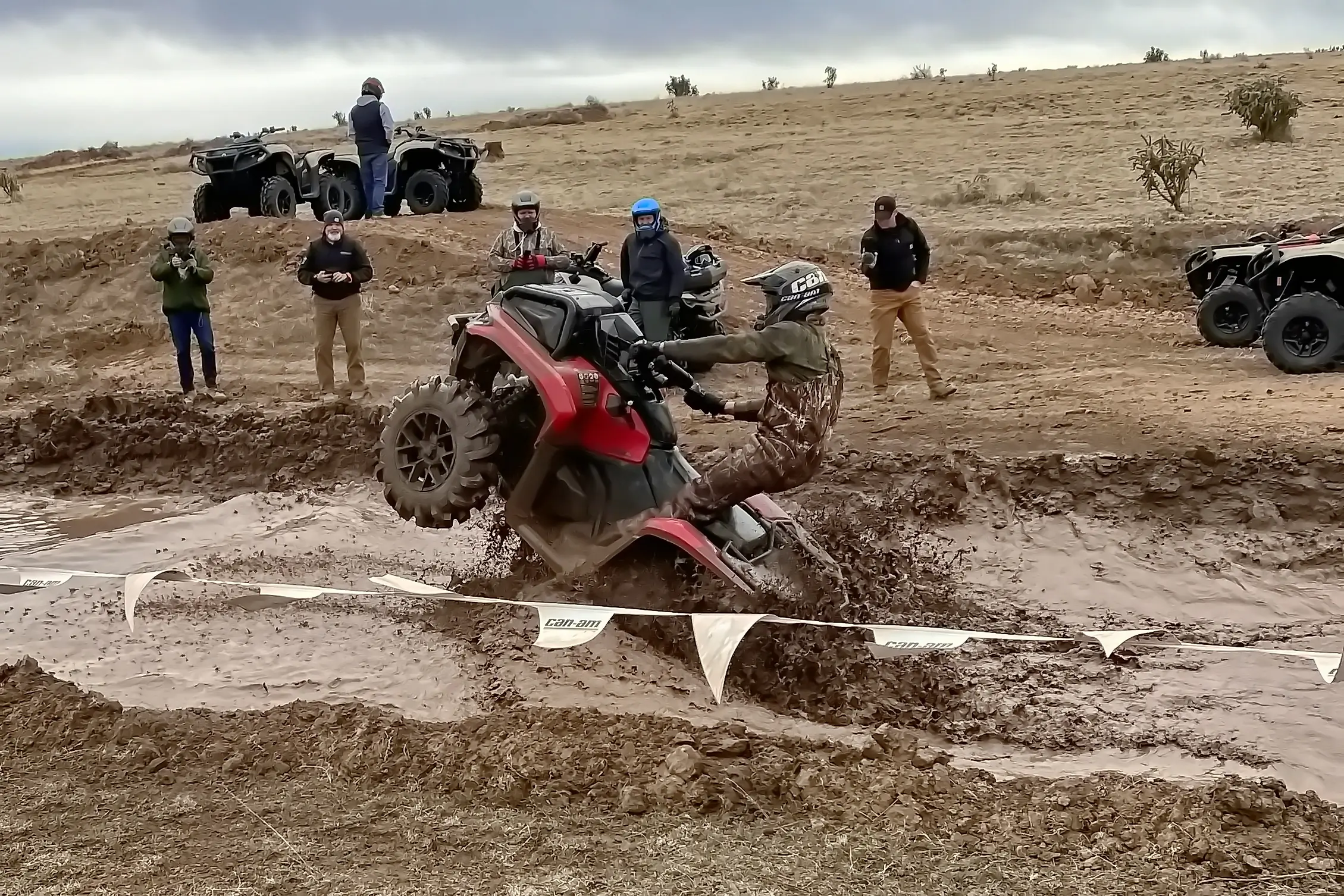



| Outlander XT 700 | Outlander PRO HD5 | Honda FourTrax Rincon | Kawasaki Brute Force 750 | Polaris Sportsman 570 | |
| ENGINE | 650cc Rotax 700 single-cylinder, liquid-cooled | 650cc Rotax single cylinder, liquid-cooled | 675cc OHV single-cylinder four-stroke, liquid-cooled | 749cc 4-stroke, V-twin, SOHC, liquid-cooled | 567cc ProStar 4-stroke DOHC single-cylinder, liquid-cooled |
| POWER | 50 hp | 40 hp | 38 hp | N/A | 44 hp |
| TORQUE | 41 lb.-ft. | 37 lb.-ft. | 36 lb.-ft. | 42.7 lb.-ft. | N/A |
| TRANSMISSION | pDrive CVT | pDrive CVT | 3-speed automatic | Automatic CVT | Automatic PVT |
| DRIVETRAIN | Selectable 2WD/4WD with Visco-Lok auto-locking front differential | Selectable 2WD/4WD with Visco-Lok auto-locking front differential | Direct front and rear driveshafts with TraxLok and locking front differential | 4×4 Selectable 2WD/4WD with variable-control front diff lock | On-demand AWD/2WD |
| WHEELBASE | 51 in. | 53 in. | 50.6 in. | 50.6 in. | 50.5 in. |
| SEAT HEIGHT | 34.5 in. | 38.6 in. | 34.5 in. | 35.8 in. | 33.25 in. |
| GROUND CLEARANCE | 11 in. | 13 in. | 9.1 in. | 9.4 in. | 11.5 in. |
| FUEL CAPACITY | 5.4 gal. | 5.1 gal. | 4.4 gal. | 5.0 gal. | 4.5 gal. |
| TOW CAPACITY | 1,650 lbs. | 1,830 lbs. | 848 lbs. | 1,250 lbs. | 1,350 lbs. |
| DRY WEIGHT | 817 lbs. | 800 lbs. | 658 lbs. | 699 lbs. | 701 lbs. |
| RACK CAPACITY (FRONT / REAR) | 100/200 lbs. | 120/200 lbs. | 66/132 lbs. | 88/176 lbs. | 485-lb. payload |
